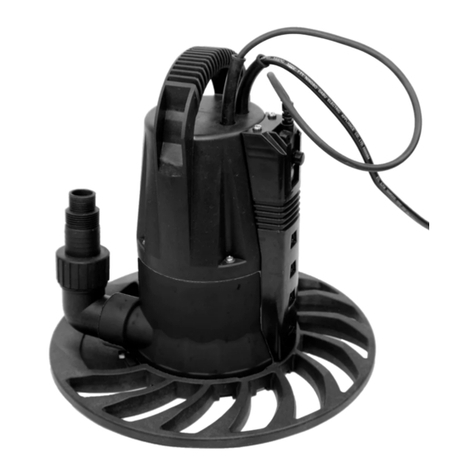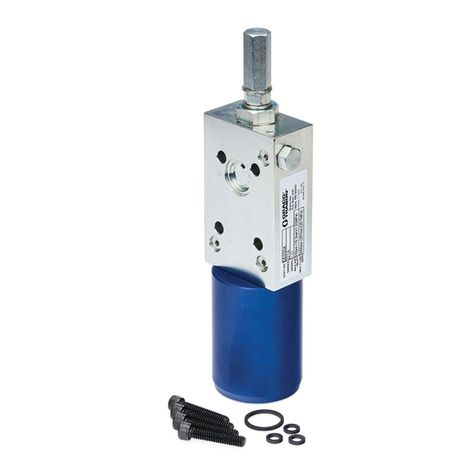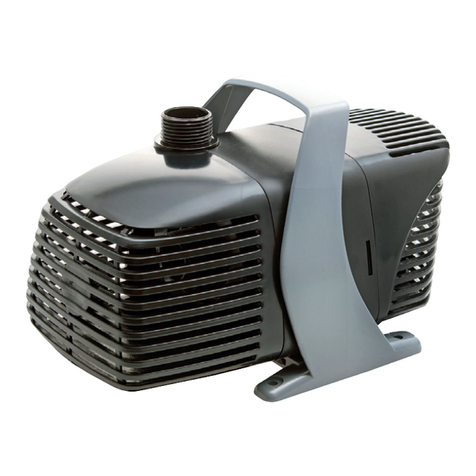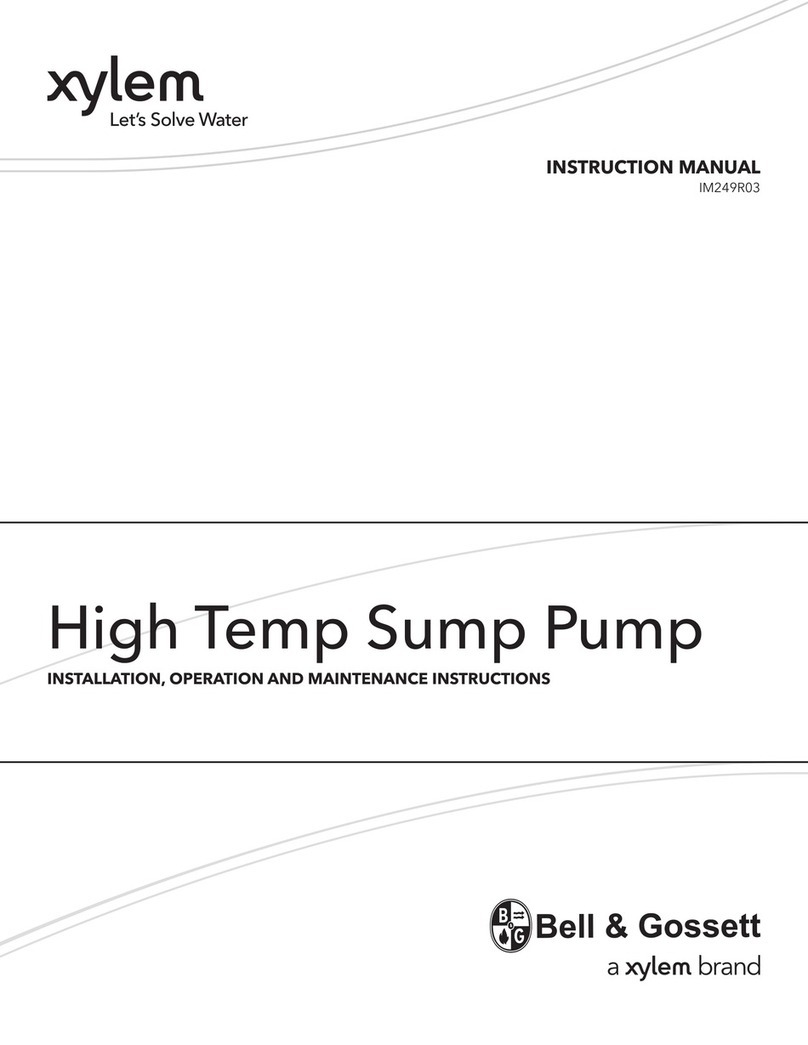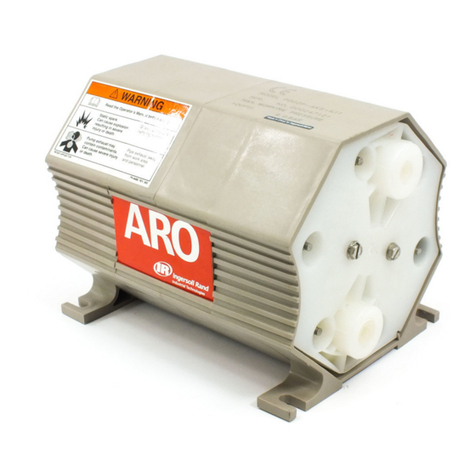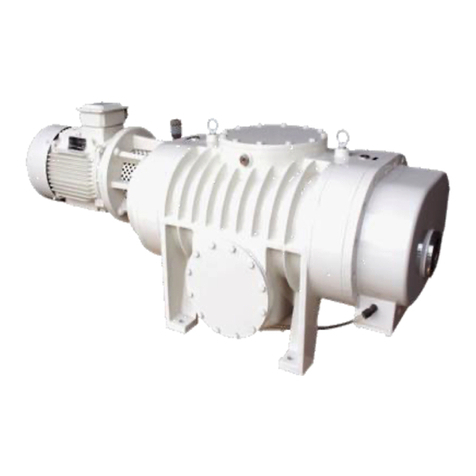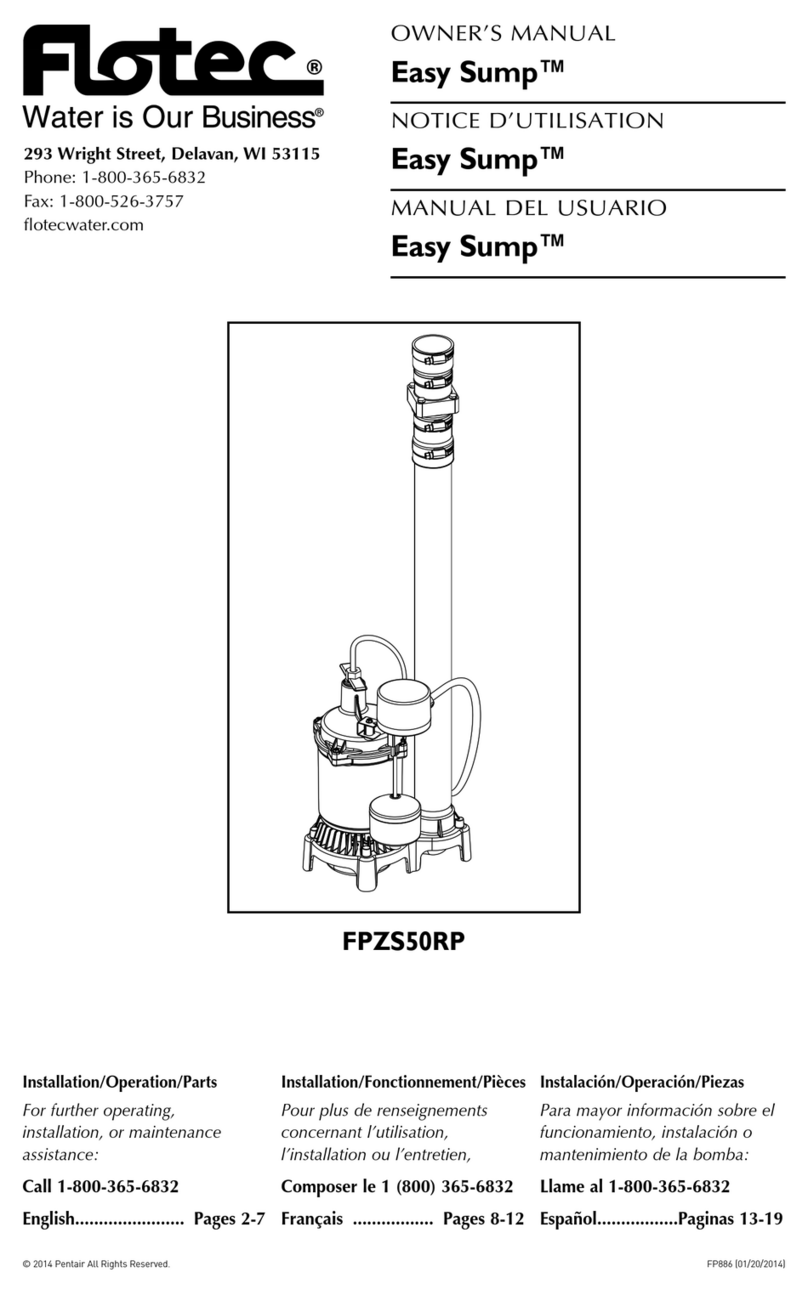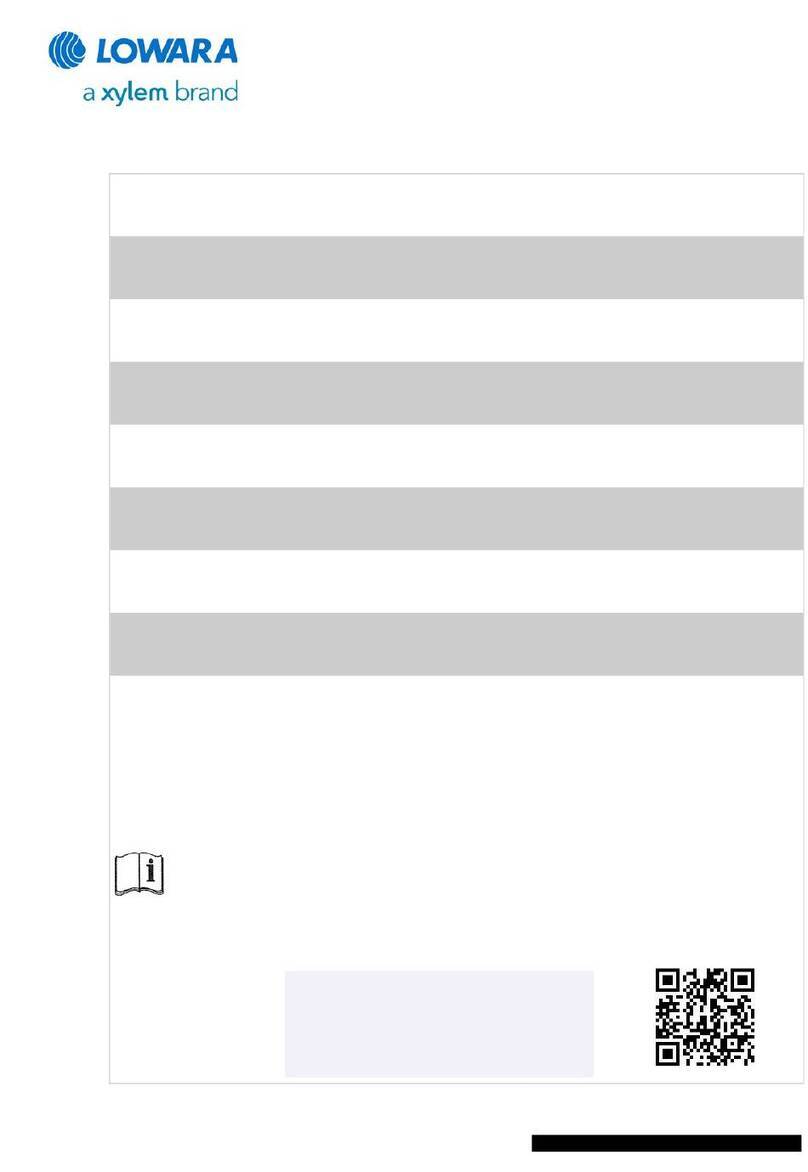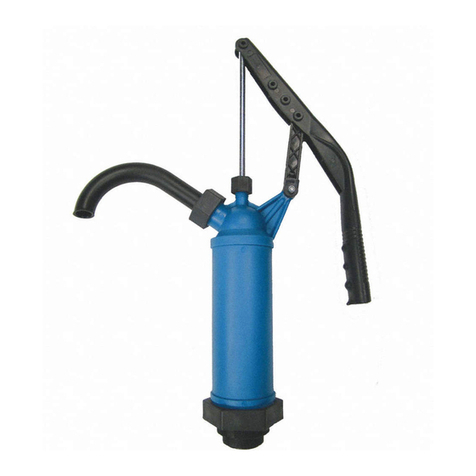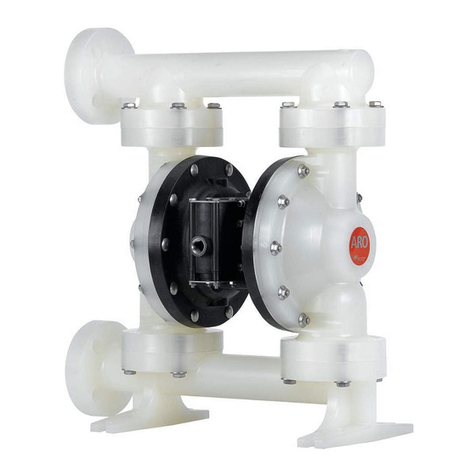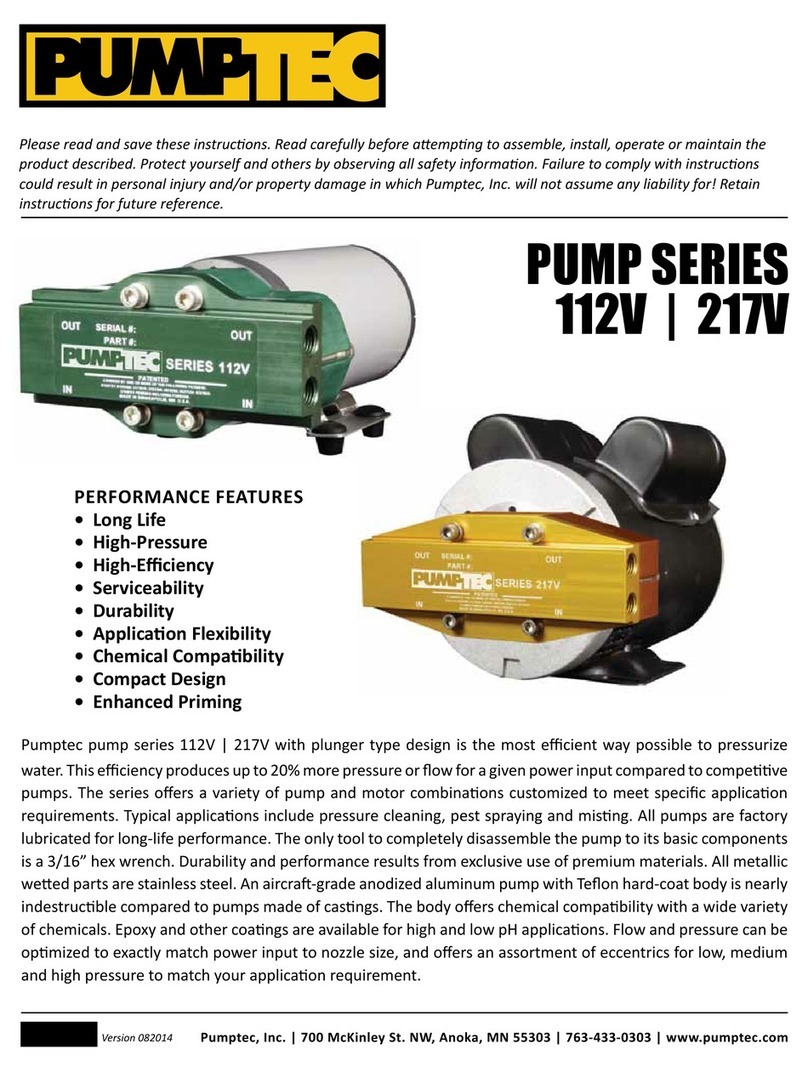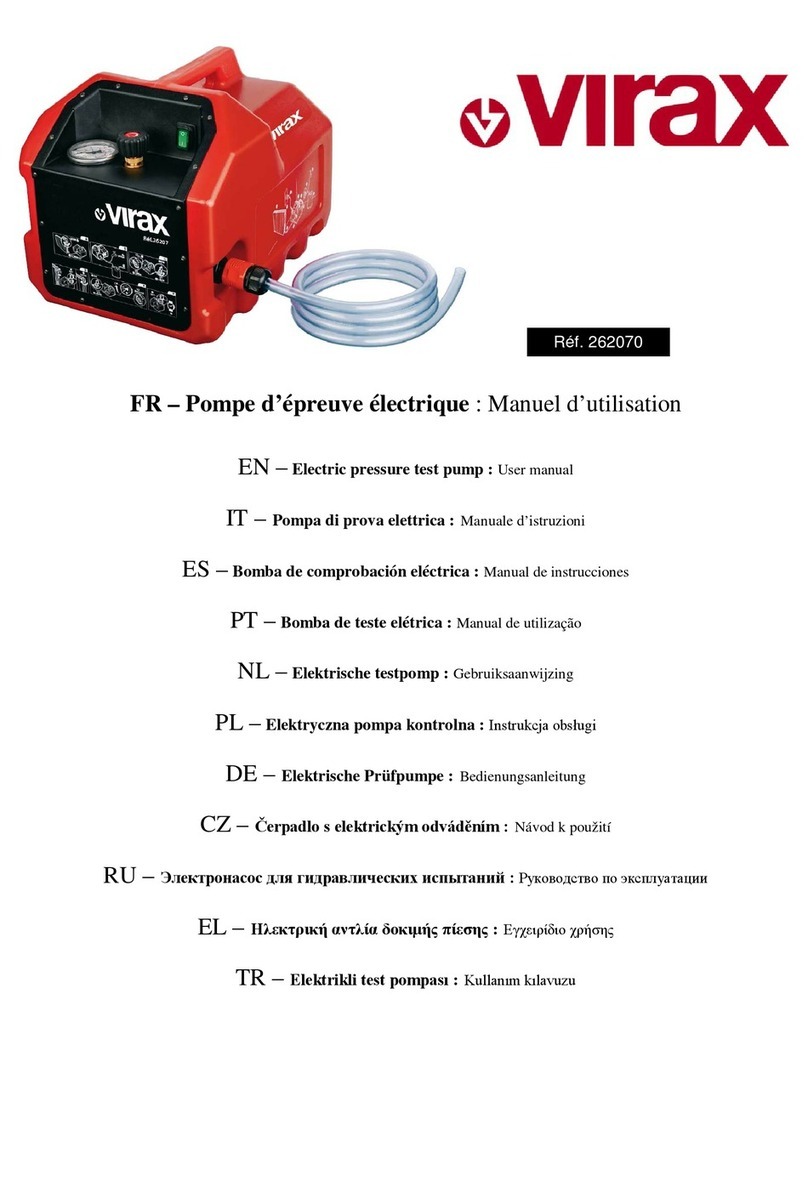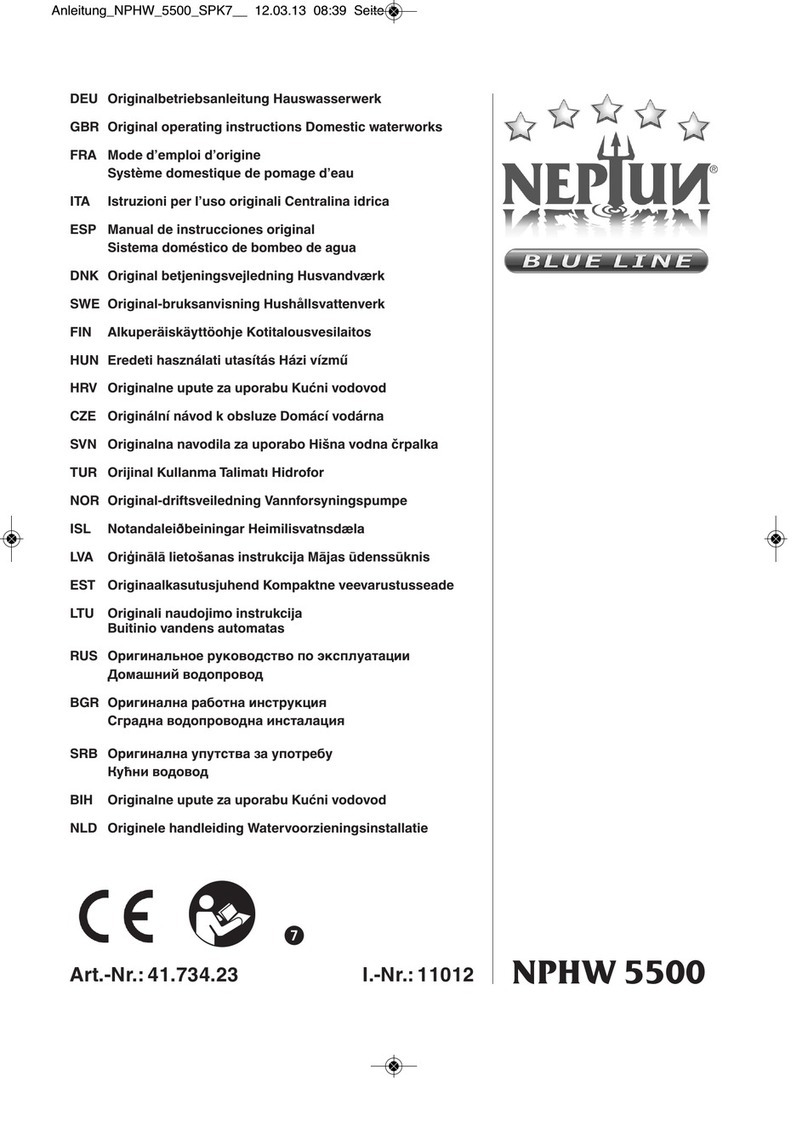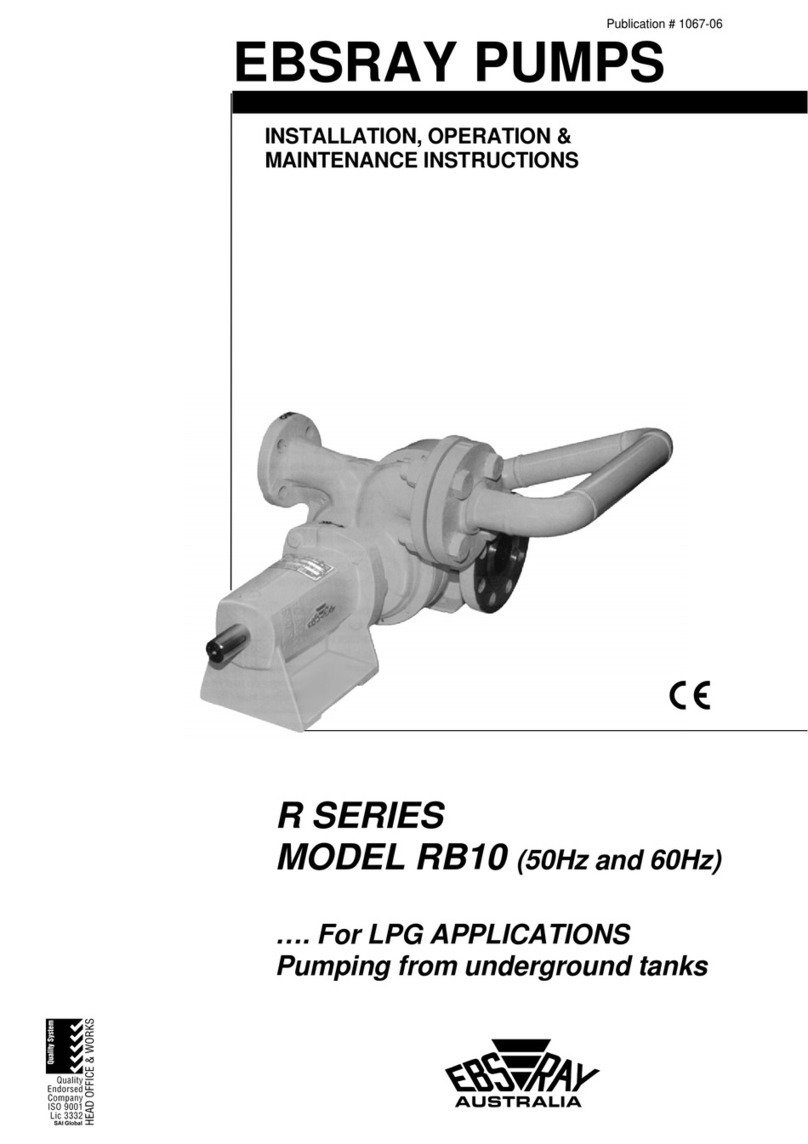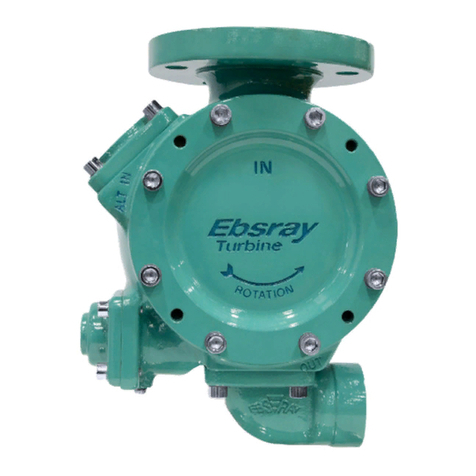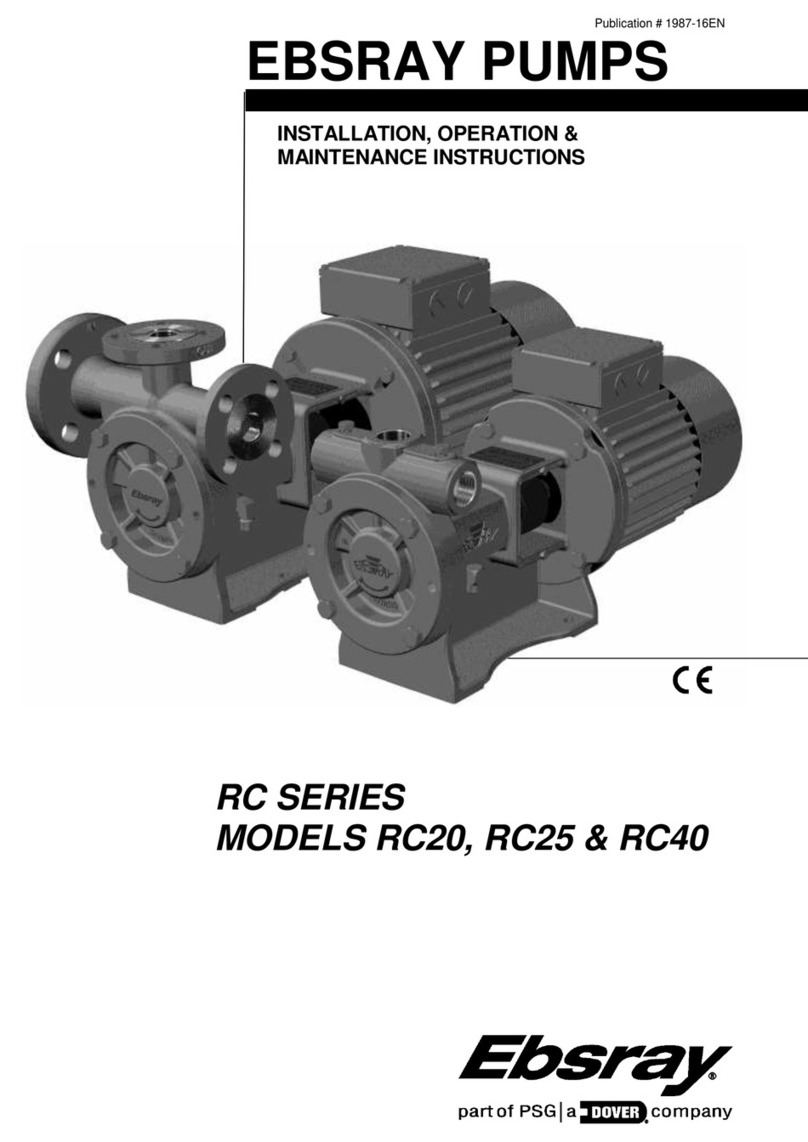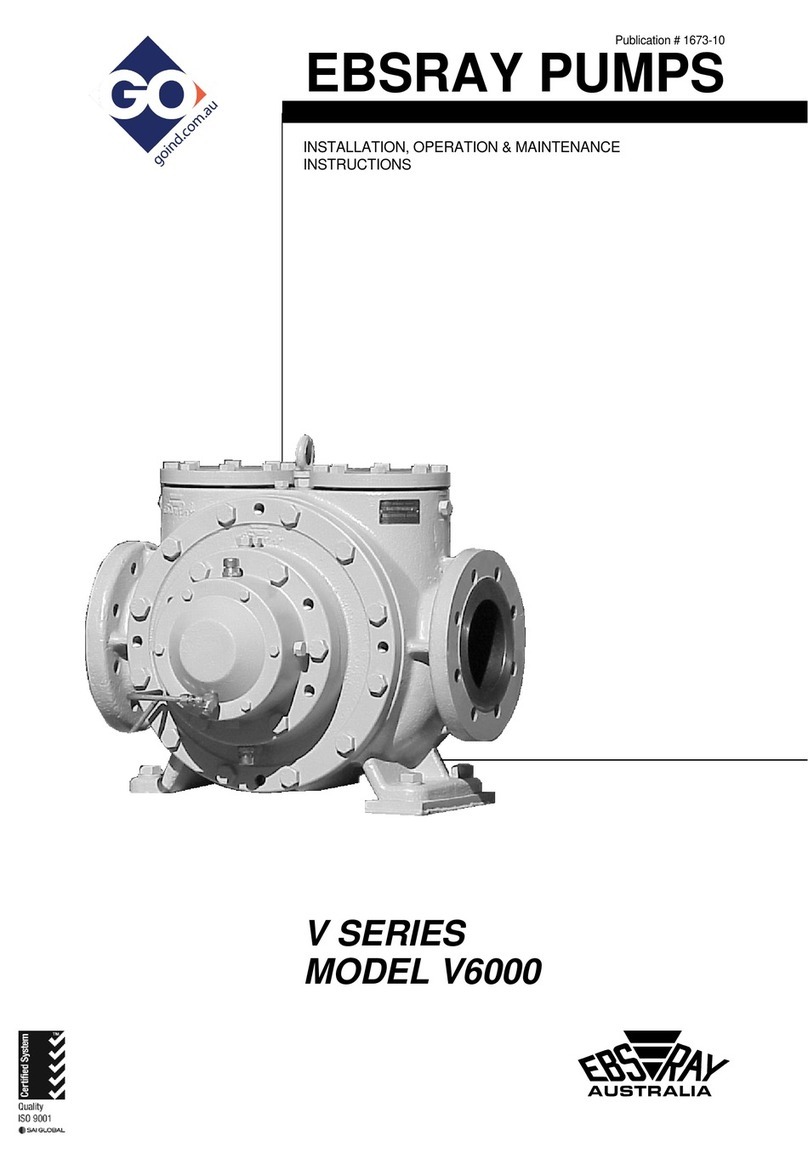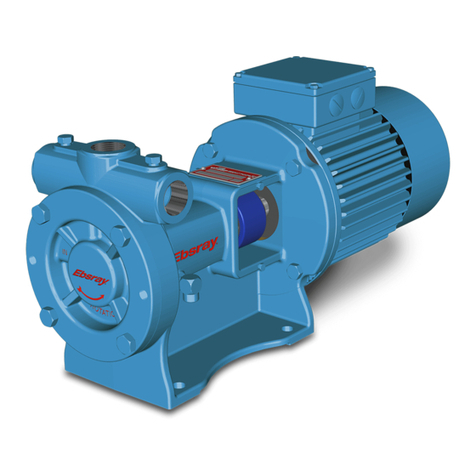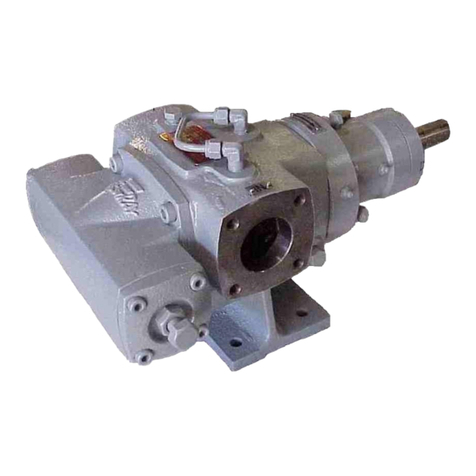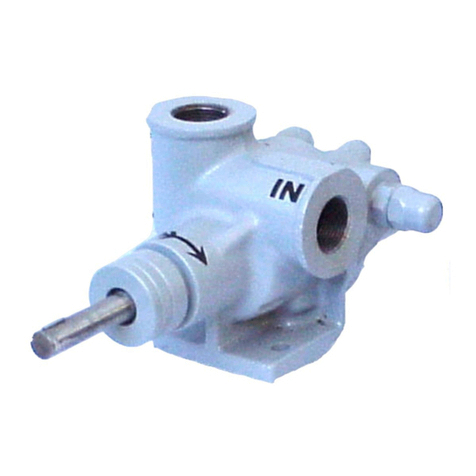9. Fit Discharge Riser assembly to the Pumpset with
appropriate thread sealant or tape. With the
Pumpset stationary, screw Discharge Riser into
e Pumpset. This
10.
12 rews
Pumpset ensuring 8 full threads minimum
engagement. The end of the thread of the
Discharge Riser must completely overlap the three
set screws in the top of th
connection should be gas-tight.
Tighten (screw) Discharge Riser into Pumpset until
both inlet centreline identification marks on the
Pumpset are in line with the mark previously placed
on the edge of the Pump Housing Cover. Check this
alignment with a stringline. Do not loosen (back off)
Discharge Riser to achieve angular alignment.
11.Check overall length of Pumpset/Discharge Riser
from Cathodic Insulation Gasket to end of Pumpset
to ensure 5mm (min) clearance to bottom (inside) of
Pump Housing.
.Using Loctite 243 or equal, fit the three set screws
in the top of the Pumpset. Tighten set sc
against Discharge Riser.
NOTE: These screws must be tight
Lubricate the protruding conduit with light oil to
prevent galling
13. when fitting the 1" NPT bored-
14. Riser assembly with
suring 8 full
through compression tube fitting.
Fit the 1" NPT bored-through compression tube
fitting to the Discharge
appropriate thread sealant or tape, en
threads minimum engagement.
NOTE: This connection must be gas tight.
TE: Do not tighten nut at thisNO stage. Once this
cu
15. rge Riser assembly
he
18. Riser is
NO
NO
d DPS as follows:
c
d le.
e) Fit 3/4" NPT compression tube fitting to 3/4"(F)
20.Fi Figure 6
be
l T
y insulated. Rectify
25 rt bracket if
ted from
28.
nut is tightened, the only way of removing the
connector housing from the Discharge Riser is by
tting through this fitting and the conduit.
Carefully lift the Pumpset/Discha
into a vertical position.
NOTE: When raising or lowering the
Pumpset/Discharge Riser assembly, take care
not to damage the Pumpset, Motor Leads or
conduit. Lift carefully with slings, chains etc.
16.Carefully lower the Pumpset/Discharge Riser
assembly into the Pump Housing making sure that
psthe Pum et does not bind or drag on the sides of
the Pump Housing.
NOTE: Before the Pumpset/Discharge Riser
assembly is completely inside the Pump
Housing, remove the adhesive tape holding t
Cathodic Insulation Gasket to the Pump
Housing Cover. Carefully fit the Cathodic
Insulation Gasket to the Turret Cover.
17.Fit Pump Housing Cover to Turret Cover with
appropriate cathodic insulators/washers for bolts
and nuts. Align marks on Pump Housing Cover and
Turret Cover. The seal between the Pump Housing
Cover and the Turret Cover must be gas tight.
Check that the Pumpset/Discharge
electrically insulated from the tank. If not insulated,
rectify as required.
TE: Do not use sealing tape or sealant on
N-GAS electrical connections.
19.Determine basic location and orientation of Junction
Box, DPS etc. Based on this determination,
assemble Electrical Fitting Kit (Australian
Certification only) an
a) Remove Junction Box cover.
b) Fit DPS to Junction Box (For Junction Boxes
which are not fitted with a 1/2" NPT(F) thread, use
adaptor supplied) Take care when fitting to avoid
damaging electrical leads.
) Fit 25mm hex nipple to Junction Box.
) Fit 25(F)M side of Conduit Seal to hex nipp
NPT side of Conduit Seal.
f) Fit 25mm plug/s to unused Junction Box port/s.
g) Fit 25mm Barrier Gland to Junction Box.
t duplicate Pumpset/Motor identification tag over
otor Leads and over conduiM t as shown in
21.Remove adhesive tape from wire protection tu
and slide tube off Motor Leads.
22.S ide wire protection tube half way into 3/4" NP
compression fitting. See Figure 6
23.While holding the wire protection tube in place,
carefully slide the Motor Leads through the wire
protection tube and into the Junction Box.
24.Test the resistance from each lead to the conduit to
ensure that they are electricall
any fault as required.
.Mount Junction Box to insulated suppo
required.
NOTE: If Junction Box requires a support
bracket, this must be electrically insula
the Turret Cover and Tank.
26.Trim excess wire from Motor Leads and DPS Leads
(leave adequate length for connection without
tension).
27.Temporariliy cap the free ends of the leads with
insulating tape ensuring that the cores are covered.
Coil the leads in the Junction Box.
29.Fit Cover and Gasket to Junction Box.
3.1.8 Discharge Pipe Fittings
1. ownstream of
discharge line.
) branch is
required for connection to the EBSRAY Inline
RV18-NRV Bypass Valve.
p rge line to accept an
of the DPS via a ¼" OD SS tube.
A DN25 (min) full bore pneumatically actuated
ball valve is required immediately d
the Discharge Riser to isolate the
2. After this ball valve, a DN25 (min
3. A ort is required in the discha
isolation valve. This valve is for isolation of the
pressure gauge and the high pressure side of the
DPS.
4. The line from the valve must be fitted with a 'Tee'
arrangement to connect to a 0-2500kPa (0–25
Bar) pressure gauge and to the high pressure side
3.1.9 DPS (Differential Pressure Switch)
1. Fit the high pressure side ¼" tube as mentioned
in 4 above.
A low pressure side (vapour pressure) port must be
provided through the Pump Hous
2. ing Cover. This
port is required to accept a valve for isolation of the
pressure gauge plus the 1/4" tube fitting for the low
pressure side of the DPS.
9
